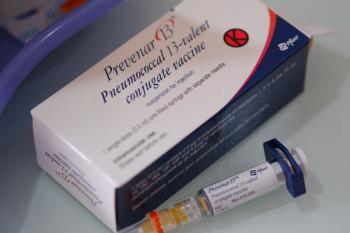
Perceived Vaccine Safety, Efficacy, Among Factors That Impact Demand for Vaccines
According to a recent literature review, various factors have contributed to a shift in vaccine demand, such as perceived vaccine efficacy and safety.
Immunizations can prevent approximately 51 million deaths between 2021 and 2030 worldwide.1 By 2030, it’s estimated that measles vaccination can save almost 19 million lives.1 Even with these startling statistics on the strong efficacy of vaccines, millions of individuals die from vaccine-preventable diseases globally.2 As of February 17, 2023, there have been 111 pediatric flu deaths reported in the 2022-2023 season.3 It’s estimated that there have been 280,000 hospitalizations and 18,000 deaths from influenza during the 2022-2023 influenza season.3 One review examines different factors that affect the demand for influenza vaccines and provides future recommendations.
Examining Shift of Vaccine Demand
One of the aspects that determines vaccine demand is cost. Typically when vaccines are free or at low cost, the demand will be higher.2 But even when vaccines are free, immunization rates can still be low.2 For instance, as of February 15, 2023 only 16% of the United States population received a bivalent (updated) COVID-19 booster.4 A recent literature review, published in the Annual Review of Public Health, discusses a conceptual model regarding the decision to vaccinate that focus on the following factors2:
· Perceived vaccine safety
· Perceived vaccine efficacy
· Perceived disease severity
· Perceived risk of infection
· Community and peer decisions
· Trust in the government, healthcare system, and media
Because there is a lack of literature available regarding the demand for COVID-19 vaccines, the review focuses on influenza vaccines.2 Review authors found that individuals are more likely to get vaccinated with the influenza vaccine if they perceive it is both safe and effective.2 Adults in the United States who believe the vaccine is not safe were less likely to get vaccinated (OR 0.2; 95% CI, 0.1-0.5).2
Trust in the government, in the health care system, and in the media was also examined. Diverse study populations For trust in the health care system, diverse study populations were evaluated, included adults in Sweden and the United States, with ORs ranging from 1.30 to 2.28.2 The association between trust in the government and influenza vaccine uptake is
unclear.2 Only 1 study, conducted in Taiwan, determined that trust in the government was associated with higher influenza vaccine acceptance rates (OR, 1.35; 95% CI, 1.16-1.57).2
Subjective norms are the perceived social pressures to engage or not engage in a certain behavior. In this case, subjective norms refer to getting vaccinated. One study of US adults found that there were higher odds of influenza vaccine uptake when the majority of an individual’s family and friends were vaccinated (OR, 8.31; 95% CI, 4.75-14.55).2 Other studies included in the review came to similar conclusions.
Perceived risk of infection was evaluated in a variety of countries, including the United States, Israel, Malaysia, France, and Australia.2 These studies revealed that perceiving a high risk of infection was associated with an increase in influenza vaccine uptake and acceptance (OR range, 1.30-4.66).2 Additionally, studies examined perceived disease severity in the United States, Hong Kong, Taiwan, and Australia.2 That evidence revealed that perception that the disease was severe, or that it would have a great impact on daily life, was associated with increased uptake and acceptance of the influenza vaccines (OR range, 1.44-2.03).2
Researchers also reviewed studies involving interventions that may shift vaccine demand.2 There is mixed evidence regarding the intervention of providing information to increase vaccine uptake.2 One study provided parents with an educational handout in the waiting room based on local and national data about influenza.2 Families who received this handout had greater odds of their children receiving the influenza vaccine by the end of the season (OR, 1.68; 95% CI, 1.06-2.67).2 However, 1 study that utilized communication messages did not have a significant impact on influenza vaccination among pregnant women.2
The authors discussed a variety of lessons learned from the literature review that may assist with future research and vaccine decision making. There are limited data on strategies to shift vaccine demand.2 Future studies that estimate the causal effect of demand shifters and vaccine uptake should be conducted.2 Interventions that focus on peer effects and improving trust are important research areas.2
References
1. Fast facts on global immunization. CDC. Reviewed September 22, 2022. Accessed February 20, 2023. https://www.cdc.gov/globalhealth/immunization/data/fast-facts.html
2. Sood N, Nasserie T, Joshi S, et al. Shifting the demand for vaccines: A review of strategies. Annu Rev Public Health. 2022;43:541-557. doi: 10.1146/annurev-publhealth-052620-093049
3. Weekly U.S. influenza surveillance report. CDC. Accessed February 22, 2023. https://www.cdc.gov/flu/weekly/index.htm
4. COVID-19 vaccinations in the United States. CDC. Accessed February 21, 2023. https://covid.cdc.gov/covid-data-tracker/#vaccinations_vacc-people-booster-percent-total.
Newsletter
Pharmacy practice is always changing. Stay ahead of the curve with the Drug Topics newsletter and get the latest drug information, industry trends, and patient care tips.





























































































































